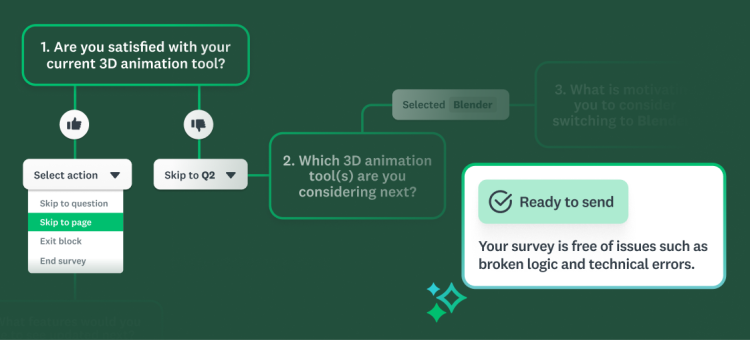When you’ve got lots of great ideas, but your company’s employees aren’t all in the same place, how do you communicate new product ideas effectively?
Victoria Kushner explains how Freemake, a small startup that develops multimedia software for creating slideshows, music videos, and audio tracks, uses surveys to brainstorm across the company. Take it away, Victoria:
The proliferation of post-it note walls in many companies are a testament to how useful brainstorming can be for product development. At our startup, Freemake, it’s an essential step in identifying and developing ideas for product development—and it gives our whole team a chance to express their insights and take part in the discussion.
But our team works remotely, which means brainstorming new product ideas together can be a little tough. As a bootstrapped-startup, we’re limited in resources, so before changing a product we have to think twice. This is where brainstorming with surveys (and SurveyMonkey!) comes in.
After collecting support requests from users, Google Analytics data, product issues, and general suggestions, we set a discussion date and select key discussion items. All the team members can explain their vision, and we use SurveyMonkey to help choose the best solutions and make sure everyone has a chance to give feedback.
The tricky part of this brainstorming strategy is to filter suggestions, as it’s sometimes difficult to be unbiased when selecting the best solution. So after each session, we gather all ideas into a brainstorming survey and ask everyone to vote for the best suggestion.
Thanks to anonymous voting in SurveyMonkey, each person can share their opinion freely. Switching to SurveyMonkey helped us craft new features more efficiently and reduce cumbersome practices.
Here are our tips for how to use surveys to brainstorm and effectively communicate new ideas:
1. Take advantage of survey templates
Before brainstorming real product features, we take a look at SurveyMonkey’s market research templates. It makes wording questions and answers much easier, and makes sure we aren’t interpreting ideas incorrectly.
2. Don’t criticize any ideas
We have only one rule for brainstorms—don’t criticize any idea. The rule seems simple, but sometimes it’s quite hard. We found that just by putting all the ideas in SurveyMonkey as answers to corresponding questions can yield the best results. It also keeps things from getting personal.
3. Allow time to think of ideas
For some team members, it’s hard to think on the go. By giving time to evaluate the groups’ suggestions, people are able to relax and think twice about possible features. We accomplish this by asking the team to vote in a SurveyMonkey poll a day after the product meeting.
4. Remind everyone to vote for ideas
We appoint someone to take down suggestions into the poll, and this person also reminds everyone to vote. But while team members need a break after brainstorming to make clear-headed judgments, don’t postpone the voting for too many days. When you use surveys to brainstorm, team members may lose the thread of the story in a week, so make sure you remind them to participate with the Email Invitation Collector.
5. Show poll results to the team
After the process, we publish the poll results and set a separate day for product managers to add the new features to our product roadmap. Most importantly, the team should know that voting was transparent. It not only encourages team members to be creative, but also feel that their product vision matters.
Thanks for sharing your story with us, Victoria! Want to tell us how your company uses surveys to achieve business goals? Tell us about it here or let us know in the Comments below.



